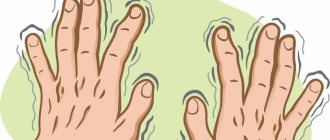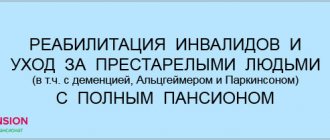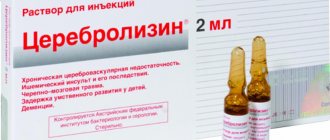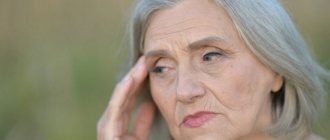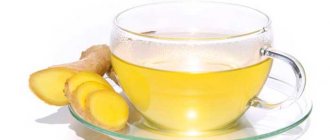Tremor is a fairly common disorder of motor function, the main symptoms of which are uncontrolled movements (shaking, vibration, trembling) of various parts of the body. The disease occurs as a result of constant involuntary muscle contractions, most often develops in older people, but can often affect adolescents. There are benign, postural and intention tremor.
Head tremor is characterized by “yes-yes” and “no-no” movements, manifests itself (intensifies) with severe excitement or at the time of drinking alcohol and is a sign of serious neuralgic disorders. Sometimes the disease is accompanied by trembling of the larynx and tongue, which causes speech impairment. The presence of tremor may indicate diseases such as Parkinson's disease, Wilson-Konovalov disease, mercury poisoning, kidney and liver failure. Symptoms of the disease vary in duration and severity.
Tremor
Tremor is a small shaking. It is usually one of the first symptoms to develop. Most often, one hand begins to tremble first. There may be specific finger movements, as if a person is rolling a pea. Gradually the tremor spreads to the other arm and legs. There may be a shaking of the head in a vertical or horizontal direction, such as nodding “yes-yes” or “no-no”. The eyelids and lower jaw may tremble separately. Very rarely, tremor covers the entire body.
Tremor is a small shaking. It is usually one of the first symptoms to develop. Most often, one hand begins to tremble first. There may be specific finger movements, as if a person is rolling a pea. Gradually the tremor spreads to the other arm and legs. There may be a shaking of the head in a vertical or horizontal direction, such as nodding “yes-yes” or “no-no”. The eyelids and lower jaw may tremble separately. Very rarely, tremor covers the entire body.
Parkinson's disease is characterized by tremors at rest. During movement, the trembling decreases, and during sleep it disappears altogether. But there are cases of intentional and postural tremor. Intentional is manifested by trembling, which occurs in the limb when it has already completed the movement it has begun. When you aim your finger at a target, at first everything is fine, but the closer you press, the more it trembles. Postural tremor occurs when it is necessary to maintain a static posture, such as holding your arms outstretched.
Treatment
Mild essential tremor often does not require treatment. Sometimes meditation and exercises are enough (gymnastics should be recommended by a doctor). But if tremors impair the ability to function and are socially unacceptable, there are treatments that can improve symptoms. Symptoms can be treated with medications or surgery.
In the case of a mental cause of trembling, it is treated by specialists from the field of psychiatry.
Medicines
Drug therapy is prescribed individually because certain drugs are more effective for a particular patient than others. You can get rid of tremors using the following medications:
- β-blockers (Propranolol);
- antiepileptic drugs (Primidon, Gabapentin, Topiramate, Clonazepam).
The intensity of essential tremor can be reduced by drugs:
- Inderal;
- Mizolin;
- Neurontin;
- Topamax.
Sedatives and nootropics are also prescribed:
- Glycine;
- Ativan;
- Klonopin;
- Valium;
- Xanax.
Your doctor may recommend drinking less coffee, avoiding other stimulants, or stopping certain medications that may cause shaking. It is also recommended to worry less and do exercises every morning.
Patients with certain types of tremors may be treated with botulinum toxin injections. The substance is injected into the muscles, causing short-term muscle weakness and decreased tremors. Injections must be done 2-4 times a year.
Surgical intervention
Although pharmacotherapy can help many patients and should always be used first, surgery is considered for severe tremors. Surgical intervention includes the following methods:
- Thalamotomy. An operation that disrupts the thalamus.
- Deep brain stimulation. Another type of thalamic surgery involves inserting a thin wire (electrode) into the thalamus and connecting it to a stimulator placed subcutaneously in the chest.
- Other surgical procedures.
High Intensity Ultrasound
This technique uses MRI to focus ultrasound on tissue destruction in the thalamus. Patients remain conscious throughout the procedure.
Alternative Treatment
You can also try using alternative (traditional) tremor therapy. Home treatment is most suitable for relief of the essential type.
Herbs
Although the main therapeutic regimens for most cases of tremors consist of the use of synthetic prescription drugs and, if necessary, surgical procedures, some herbal medicines can be used with the consent of the doctor.
- Baikal skullcap. This herb is traditionally used as a mild relaxant and sedative. In addition, this plant is a natural muscle relaxant that can reduce spasms that occur with essential tremor.
- Passionflower. Because of its distinct relaxing properties, this plant is used to relieve anxiety and seizures in America and throughout Europe. The exact relaxing mechanism of this herb for its benefits for anxiety is not yet known. But passionflower is thought to increase gamma-aminobutyric acid (GABA) levels in the brain. This leads to calming the activity of brain cells, therefore, to relaxation.
- Valerian. This plant has been used for thousands of years to treat nervous anxiety, anxiety, and insomnia. Valerian is still one of the most popular herbal remedies that promote relaxation. Like other calming herbs, the true mechanism of action of the plant is not known.
- Kava-kava. Traditionally, the kava kava plant was used as a ceremonial herb in the Pacific Islands. Today it is used as a relaxant. The herb can significantly relieve nervous disorders, anxiety, and insomnia.
Caution is advised when consuming kava kava; in large doses, this herb carries a risk of liver damage.
Hypnotherapy and Tai Chi
Hypnotherapy (hypnosis under the guidance of a certified hypnotherapist) and Tai Chi (the Chinese practice of slow, deep breathing) can also help combat tremors.
Medicinal marijuana
Marijuana is known for its beneficial effects on pain, chemotherapy effects, nausea, anxiety, and muscle spasms. The role of marijuana in solving brain disorders is just beginning to be studied.
Marijuana contains delta-9-tetrahydrocannabinol (THC). THC is one of over 70 cannabinoid compounds present in the plant. Each has different biological effects. These compounds are similar to natural chemicals (anandamide, a feel-good hormone that scientists believe has significant health benefits) secreted in the body and forming the endocannabinoid system, which is important for brain development and function.
Cannabinoid receptors are located throughout the brain, especially in areas affecting knowledge, pleasure, motor coordination, temporal and sensory perception. High concentrations of cannabinoid receptors are present in the hippocampus (memory), cerebellum (learning and motor coordination), and basal ganglia (motor control). Activation of these receptors leads to changes in coordination.
Magnesium
Magnesium is the most popular remedy for essential tremor. Some people with tremors have found that taking a magnesium supplement helps solve the problem.
Avoiding aspartame
Aspartame is a neurotoxin. Unfortunately, it and similar artificial sweeteners are often found in foods and drinks. Sugary drinks, "light" yogurts and ice creams, other industrially processed foods, and even vitamin supplements contain aspartame or similar artificial sweeteners. Eliminating them from the diet has solved tremor problems in a wide range of patients. MSG (monosodium glutamate) is another neurotoxin that should be completely avoided.
Muscle stiffness
Muscle stiffness and increased tone are also among the main symptoms of Parkinson's disease. This symptom even has its own term - plastic waxy flexibility. It is characterized by the fact that the limbs and body freeze in a given position. In this case, certain muscles suffer, and their stiffness leads to the formation of the so-called supplicant pose. The person slouches, his head leans forward, his arms are slightly bent at the elbow joints and pressed against the body, and his legs are bent at the hip and knee joints. If an outsider tries to straighten the patient’s limb, he will feel the kind of stepwise movements that are characteristic of gears in mechanisms. The phenomenon also got its name - the cogwheel symptom. Muscles lose the ability to return to their original position after performing an action. Therefore, patients may freeze in different positions for some time.
How to get rid of the disease
Alcohol tremors indicate a severe form of addiction. Therefore, it is important not only to eliminate the symptoms of the pathology, but also its cause.
Treatment at home with a doctor's call
To eliminate involuntary muscle contractions and avoid progression of the disorder to a generalized seizure, use:
- saline solutions, cocarboxylase, glucose;
- vitamins (necessarily thiamine, pyridoxine and cyanocobalamin);
- hepatoprotectors;
- means for activating cerebral and peripheral blood circulation, nootropic drugs;
- cardioprotectors;
- painkillers and antispasmodics.
Usually such treatment is sufficient to alleviate the patient's condition. If the tremor persists, the patient is additionally administered drugs from the group of benzodiazepines. They have a double effect: sedative and anticonvulsant.
Inpatient therapy
In any case, it is better to carry out detoxification in a clinical setting, but strict indications for hospitalization are:
- chronic diseases of the cardiovascular system;
- renal and/or liver failure;
- severe neurological pathologies (epilepsy, encephalopathy, recent stroke, history of neuroinfections, traumatic brain injuries);
- risk of developing a generalized seizure;
- signs of delirium, hallucinosis;
- use (in addition to alcohol) of drugs, strong sedatives.
In a hospital, the doctor has more opportunities to resolve the issue than to treat alcoholic tremors. The patient is under medical supervision at all times, basic vital parameters are monitored, and medications are administered almost around the clock.
In addition to medications, the clinic offers hardware detox procedures (ILBI, plasmapheresis). Excellent results are demonstrated by physiotherapy, laser or electromagnetic stimulation of biologically active zones on the body.
In a hospital, you can determine and how to treat the cause of alcoholic tremors - an uncontrollable desire to drink. After detoxification is completed, consultations with a psychotherapist begin, who motivates the patient to finally get rid of addiction.
How to treat the disease yourself
Doctors categorically warn against self-medication, taking any medications (and especially sedatives or anticonvulsants) without prior diagnosis and doctor’s prescriptions. But if for some reason the patient cannot go to a specialized hospital, doctors give several tips on how to alleviate their condition:
- completely eliminate alcohol;
- reconsider your diet and diet: you need to give up coffee, strong tea, and energy drinks;
- moderate physical activity is required (but not before bedtime);
- drink plenty of fluids (at least 1.5 liters of clean water per day);
- go to bed on time, before going to bed, avoid watching gadgets and movies - it is better to replace them with a walk in the fresh air.
But these are only temporary measures; final recovery from alcoholism requires complex long-term treatment and mandatory rehabilitation. But in parallel with addiction therapy, to eliminate alcoholic tremors, correction of concomitant neurological and metabolic disorders is also carried out.
Hypokinesia
Hypokinesia is a decrease in motor activity. General stiffness of movements is characteristic. In order to make any gesture, the patient must make an effort. Outwardly, it looks as if the movements are made after a pause, they are slow.
A person's gait changes. He moves in small mincing steps, with his feet parallel to each other. The arms do not move in time with the walking, but are pressed to the body. Facial expressions suffer. The face becomes motionless and impassive. The display of emotional reactions is delayed. Such people rarely even blink. The voice changes, it becomes monotonous and dull. If a person utters a long sentence or phrase, it fades towards the end.
Types of head tics
Nervous tics in the head area are motor and vocal.
In the first case, this is the repetition of identical movements with the nose, lips, eyelids, and forehead. Vocal tics are obsessive snorting, hissing, coughing, sighing, and sniffling. The child can make vowel sounds and make short squeaks. Also, hyperkinesis (tics) in children are classified in medicine as local and multiple - a single muscle or several muscles are affected at once.
According to the initial state of the child’s nervous system, primary and secondary tics are distinguished. Primary is the only disorder, while secondary is provoked by existing brain dysfunction.
Postural instability
Violation of postural fixation can occur in the early stages, for example, patients cannot hold their arms extended forward. But these are not such serious deviations that both patients and doctors pay attention to them. But closer to the later stages of the disease, serious problems begin. For example, there are difficulties with starting movement and stopping it, no matter how difficult it is to overcome the inertia of rest and movement. During movement, the body tilts along the course of inertia; in particular, when moving forward, it tilts and, as it were, moves ahead of the legs. This disrupts the center of gravity and leads to frequent falls and injuries.
Avoid risks
First of all, you need to lead a healthy lifestyle. No alcohol, drugs, or smoking. Follow a daily routine, try to sleep at least 9 hours.
Try to get as many pleasant emotions as possible. Contact a specialist at the slightest suspicion of illness.
There is no need to be ashamed of head tremors and try to hide this condition, it won’t work anyway. Don't hide from the problem, thinking that everything will go away on its own, it won't happen.
Sound the alarm at the slightest symptoms, consult a doctor and everything can still be improved for the better. Take care of yourself and be healthy!
Other symptoms of Parkinson's disease
In addition to movement disorders, Parkinson's disease may cause a lot of other symptoms, some of which lead to maladaptation and disability:
- Increased salivation.
- Mental disorders - depression, psychosis, dementia, insomnia, hallucinations. These manifestations can be associated with the disease itself, or occur as side effects from its treatment.
- A speech disorder associated with the impossibility of normal functioning of the muscles of the speech apparatus.
- Dysfunction of the pelvic organs.
- Weight changes - from emaciation to obesity.
- Increased greasiness of skin and hair.
Without treatment, the symptoms of Parkinson's disease steadily progress, and within 15 years of the onset of the disease, about 90% of patients have disability. But modern methods of therapy (medical and surgical) make it possible to keep the situation under control, increase life expectancy and improve its quality in people with such problems.
Causes of pathology
Head tremors occur due to stressful situations, when the body is overworked and exhausted. This phenomenon occurs due to the use of medications. If the symptom is observed in adolescents and the elderly, then this deviation is usually benign in nature, and heredity in this case does not play any role.
In exceptional cases, there is a possibility of tremors spreading completely over the entire body.
Spasmodic torticollis is a pathological abnormality associated with a nervous disease caused by a characteristic abnormal position of the head.
If an adult experiences this trouble, this may be a consequence of the following changes:
- Multiple sclerosis.
- Kidney and liver diseases.
- Respiratory disorders.
- Deviations in the functioning of the midbrain.
- Poisoning with salts of heavy metals.
- Hyperthyroidism, which occurs when the thyroid gland malfunctions.
- If there is pathology of the central nervous system.
- For osteochondrosis of the spine, namely the cervical region.
- If a person has an alcohol, toxic or drug addiction.
- With genetic predisposition.
Newborns may also experience involuntary head shaking due to injuries to the nervous system.
Causes of tremor in infants:
- During development, fetal hypoxia was noted.
- For birth injuries.
- In case of stressful conditions of the mother while waiting for the baby.
- With an increased content of norepinephrine, a hormone produced in the adrenal glands.
Fetal hypoxia can be caused by:
- Wrapping the baby in the umbilical cord.
- Fetoplacental insufficiency.
- If a woman had polyhydramnios.
- During rapid labor.
- For infectious lesions of the uterine cavity.
Premature babies also have a shaky head quite often.
If teenagers have a shaking head, possible causes may include:
- Information overload. For example, stress may be caused by upcoming exams.
- Experiences on the personal front.
Such stress can be accompanied by impaired coordination of the motor system, aggressiveness and poor sleep.
Literature:
- A manual on narcology for doctors and paramedics of primary medical care / A. A. Churkin, T. V. Klimenko. / Moscow ; Khanty-Mansiysk / Health and Society, 2006 (Cheboksary: IPK Chuvashia). — 173 p.
- Tremor: pathogenesis, features of the clinical picture, treatment. Ivanova E.O. / Neurological journal. 2013
- Tremor: classification, clinical characteristics. Govorova T.G. / Magazine Consilium Medicum 2021
Need some advice?
OR CALL A DOCTOR
CALL!
+7
